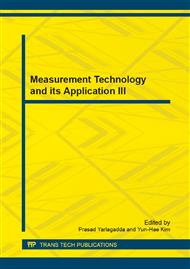p.1054
p.1059
p.1063
p.1068
p.1073
p.1078
p.1085
p.1090
p.1095
Coordinate Transformation of the Quadrotor Unmanned Aerial Vehicles’s Flight Path
Abstract:
Because of the quadrotor unmanned aerial vehicles (named as QUAV-X4) has numerous advantages, it attract more and more researchers to study it. The paper use QUAV-X4 as a object of studying, adopting Matlab as a simulation platform. According to QUAV-X4’s practical flight track, this method modularized QUAV-X4’s the whole process. Using geometric algorithms to describe QUAV-X4’s flight path to avoid calculation error when we adopt difference algorithm, realizing free combination of QUAV-X4’s flight path. Experimental results show that, this method can reflect the true QUAV-X4’s flight path.
Info:
Periodical:
Pages:
1073-1077
Citation:
Online since:
June 2014
Price:
Сopyright:
© 2014 Trans Tech Publications Ltd. All Rights Reserved
Share:
Citation:


